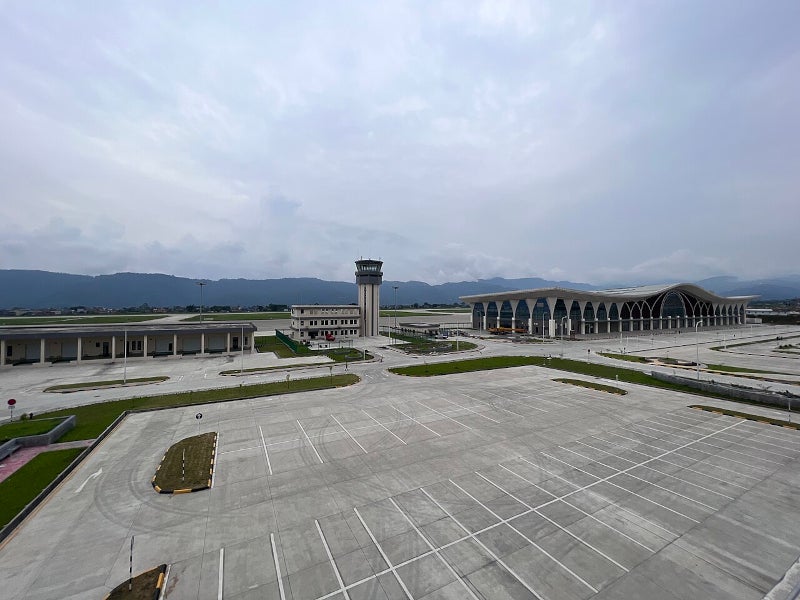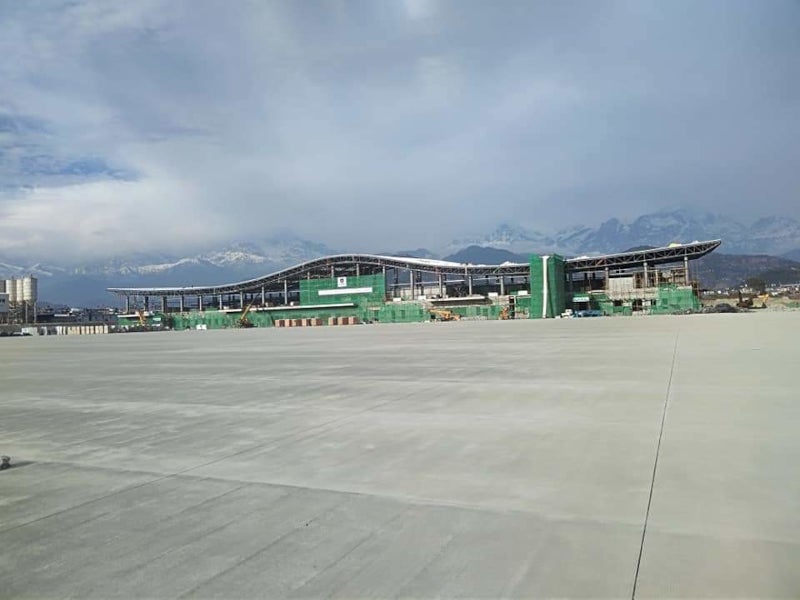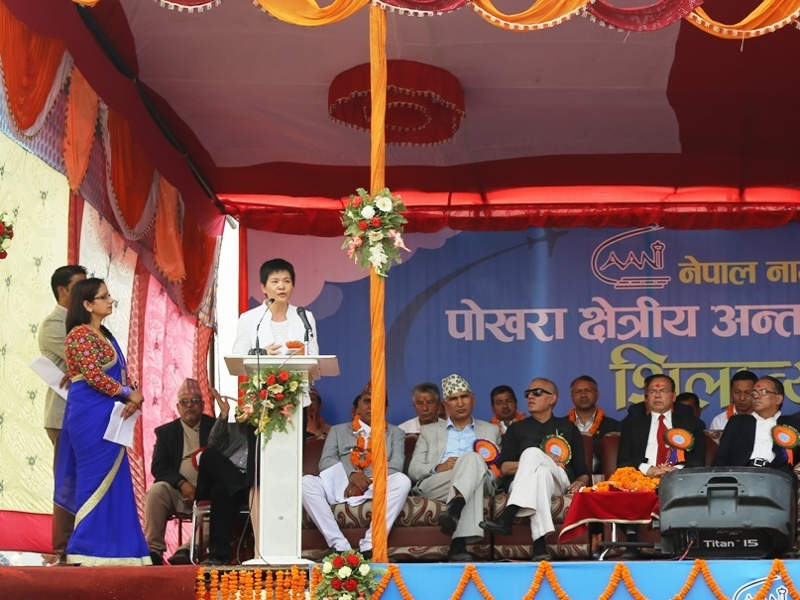The Pokhara Regional International Airport (PRIA) is a new airport built in the Kaski district to serve as the aerial gateway to the Himalayan and Annapurna regions of Nepal.
The ground-breaking ceremony of the airport was held in April 2016 while construction works commenced in July 2017 and were completed in 2022. The airport began operations in January 2023.
The airport replaced the previous Pokhara Airport, commissioned in July 1958. It is the third international airport in Nepal and handles approximately one million passengers annually.
The project provides improved air transportation services to the growing number of international and domestic passengers and cargo. In addition, it strengthens the country’s civil aviation sector and contributes to economic and social development, as well as tourism.
Capable of handling wide-bodied aircraft, the new airport serves as an alternative to Tribhuvan International Airport in the event of an emergency. It facilitates direct connectivity to South and East Asian countries.
Location of Pokhara Regional International Airport
The airport site is located on the hillside, 800m above sea level at Chhinne Danda in Pokhara, Kaski District, Gandaki zone, western Nepal.
The location is well connected to the Prithvi Highway (Kathmandu-Pokhara).
Pokhara International Airport details
The conceptual masterplan of the Pokhara airport was designed to the category 4D standard set by the International Civil Aviation Organization (ICAO), International Air Transport Association (IATA) and the US Federal Aviation Administration (FAA).
The airport is built on a 200ha (494.2-acre) site acquired by the Civil Aviation Authority of Nepal (CAAN) in 1974.
A 2.5km-long and 45m-wide runway with a 330m runway strip was built to support the take-off and landing operations of commercial aircraft such as Airbus A320, Boeing 737-700 series and Boeing 757-200.
A 1.2km × 23m parallel taxiway was built from the runway central line on the north side. Two aircraft parking aprons, each measuring 300m in length and 100m in width, were built for parking up to five domestic or international aircraft.
The airside infrastructure included two 182.5m-long and 23m-wide exit taxiways, access roads and aerodrome pavement.
Landside infrastructure includes a 10,000m² (107,639ft²) international terminal building, a 4,000m² domestic terminal building and a 3,500m² customs and cargo building.
The airport also features a 2,500m² air traffic control tower and operations building, two security buildings, a 6,000m² domestic and international hangar, and a 200m² administration building. Additional facilities include car parking areas, an air navigation unit, a fuel storage facility, water supply facilities and other utilities.
Apron capacity at Pokhara Airport
The apron at Pokhara Airport is designed to handle a mix of international and domestic flights, with specific bays allocated for different types of aircraft.
Three international bays are allocated for Boeing 737 series aircraft, with two bays having passenger boarding bridges while four domestic bays are allocated for ATR 72 type aircraft and four domestic bays for Beechcraft type aircraft.
Security and other facilities at Pokhara Airport
The airport features X-rays for hold and hand baggage, liquid explosives detectors, narcotics and explosives trace detectors, MM wave body scanners, walkthrough metal detectors (WTMD), handheld metal detectors (HHMD), millimetre wave technology devices (MMTD), CCTV surveillance systems, and access control systems.
Other facilities at the airport include passenger boarding bridge, public address (PA) system, flight information display system, free Wi-Fi, help desk, ATM service, trolley service, restaurants and gift shop, garden, outdoor passenger waiting hall, childcare room, parking lot management system, and airport taxi services.
Power supply details
The Pokhara Airport is equipped with three 11kV substations, the central substation, the lighting substation, and the terminal substation.
The airport receives a primary power supply of 3.6MW from the Kundhara substation operated by the Nepal Electricity Authority (NEA).
For standby power, the airport is supported by four 1,250kVA diesel generators, four 250kVA diesel generators, and four 50kVA diesel generators.
Financing details
EXIM Bank of China executed a loan agreement with the Nepalese Ministry of Finance to provide $215.9m in funding to support the new airport in March 2016.
Contractors involved
China CAMC Engineering, a construction engineering company, secured an engineering, procurement and construction contract from CAAN to build the airport in May 2014. The company was awarded a letter of appreciation by CAAN for completing the airport project in March 2022.






